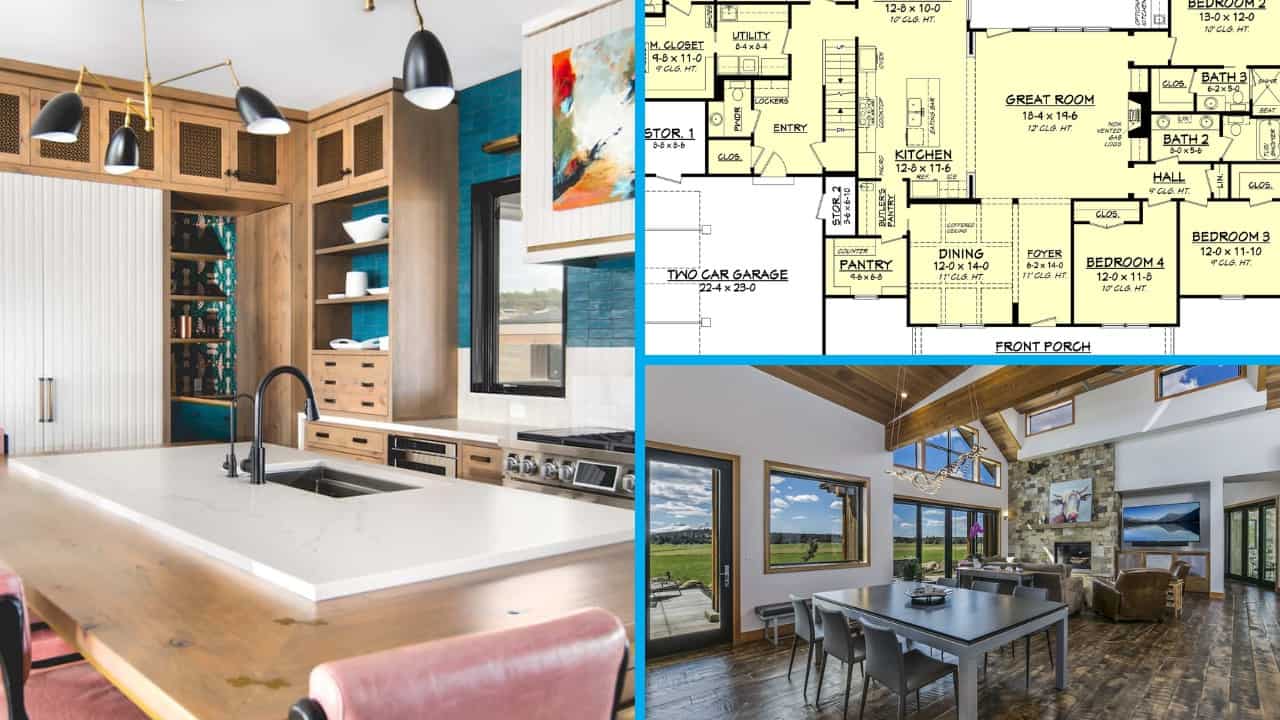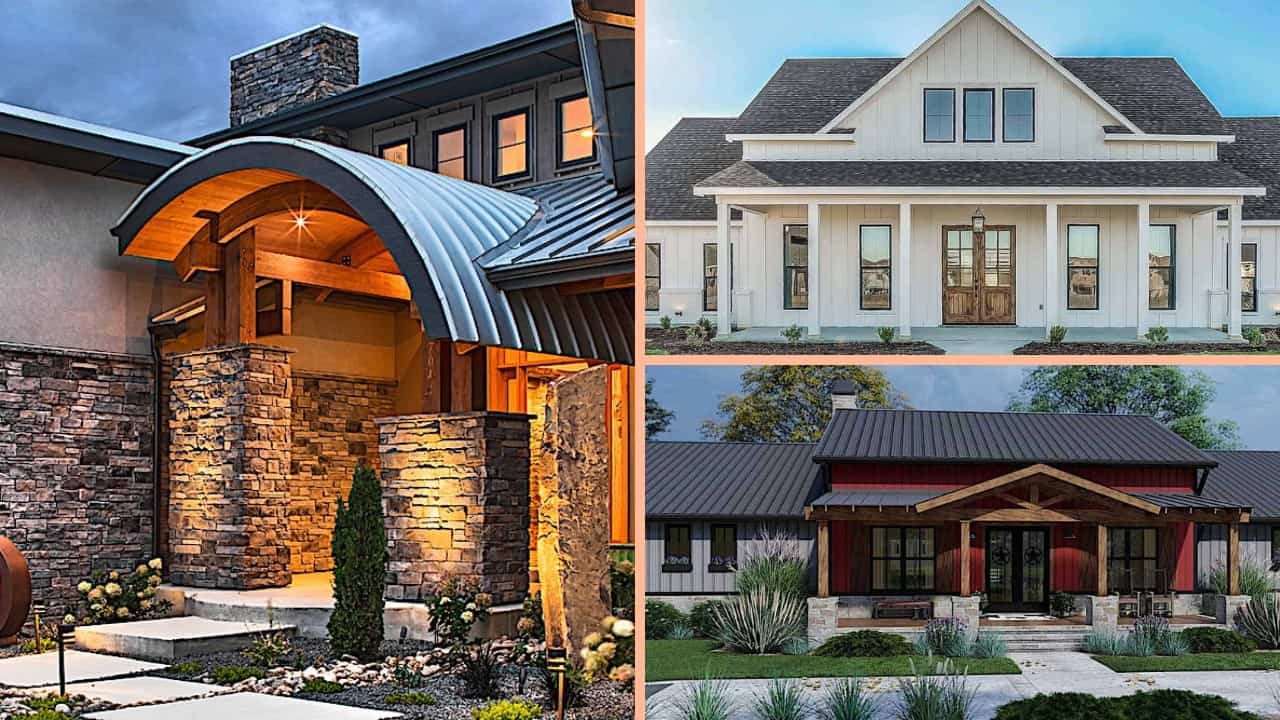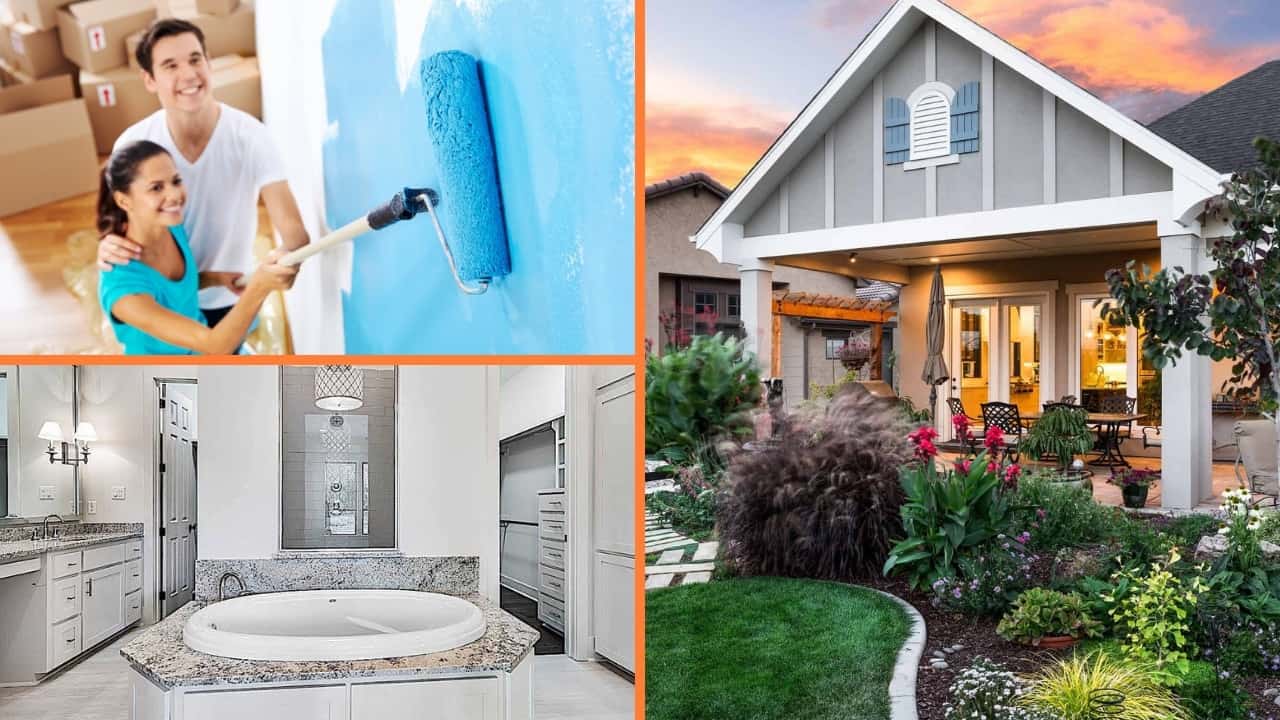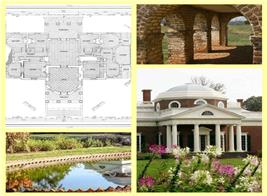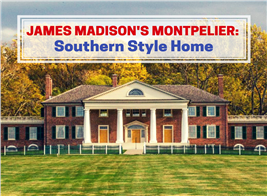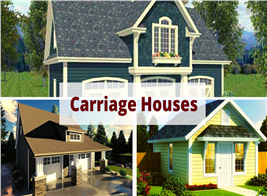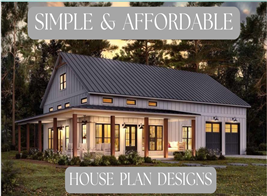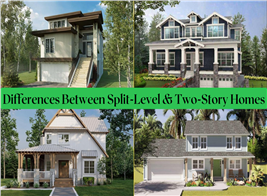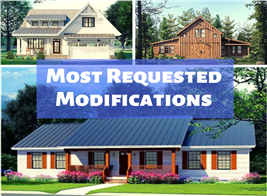What to Look for in a North Carolina House?
By Rexy Legaspi | Updated January 10, 2023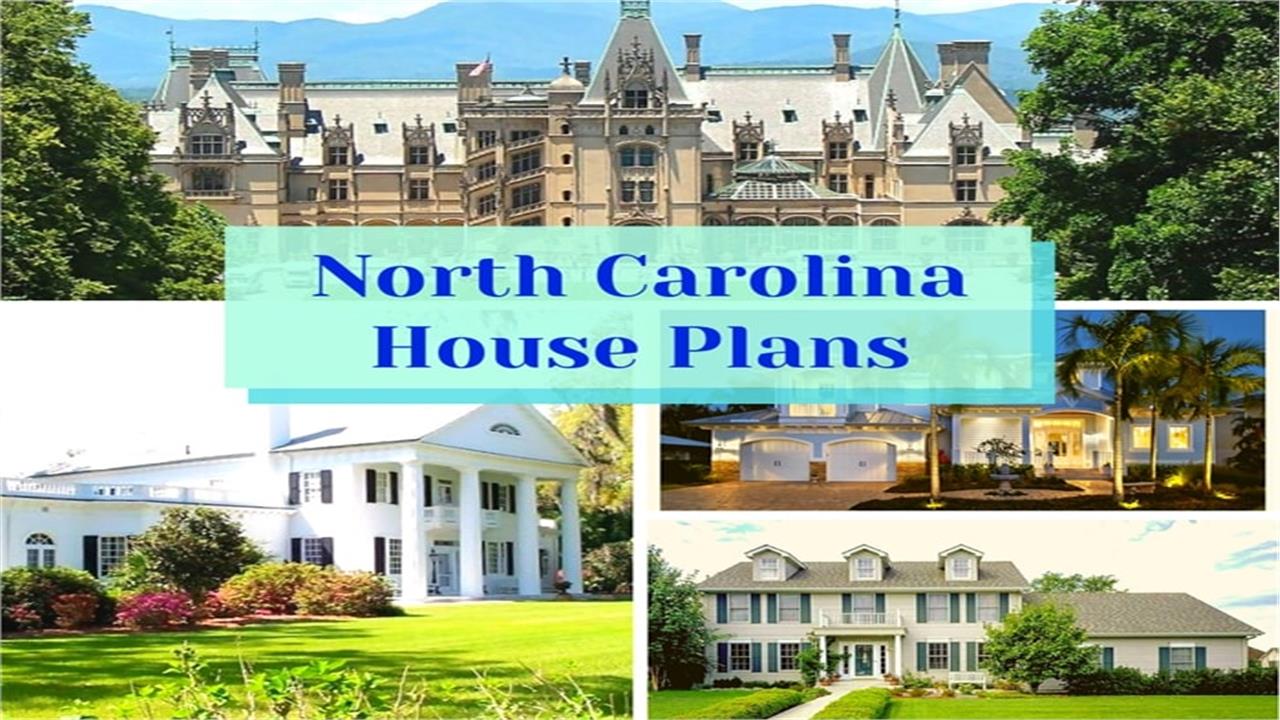
Timeless and Elegant Home Designs in the “Old North State”
It should come as no surprise that North Carolina’s residential architecture is heavily influenced by European designs. After all, it was one of the 13 original colonies – settled by the English, Irish, Scots, and Germans. Its traditional homes have a rich history of being well-designed and timeless. In addition to the elegant Colonial, Federal, and Georgian styles, North Carolina also features the classic plantation and farmhouse, log cabin, bungalow, Modern, and contemporary designs, as well as a mountain vernacular style adapted to its climate and geography.
Let’s take you on a tour of the Old North State’s homes. From the mountain region to the coastal, inland, rural, and urban sections, let’s explore North Carolina’s great variety of residential styles.
The Georgian style, with its symmetry and balance – illustrated by this stately 2-story, 3-bedroom home – is very popular in North Carolina. The home, which has the traditional brick and columned exterior facade, showcases a 2-story front porch and symmetrical placement of windows on the lower and upper levels (Plan #201-1013).
Features of North Carolina Homes
While North Carolina homes come in different architectural styles, they have several features that are typical of house plans in the hot and humid weather of the South.
Among the characteristics of prototypical homes in North Carolina are
- A wide wrap-around front porch
- Open breezeways
- Large shutters
- Wide roof overhangs
- Columns on the exterior facade
A gorgeous 1-story, 6-bedroom Country style home displays a number of the distinct features of North Carolina homes: a huge wrap-around porch, window shutters, columns, and rooflines with the wide overhangs. (Plan #193-1017)
The Many Looks of North Carolina Home Designs
As English colonists started settling in North Carolina around 1653, they came with traditional European styles in mind for their homes. But they quickly adapted them to the local conditions, topography, and available building materials – bringing about a form of vernacular architecture in the region. (For more information on vernacular architecture, see this article about house styles in Tennessee.)
1. Vernacular Architecture
In the Uwharrie Mountain area – where timber was abundant – homes were built of wood instead of stone (which was common in Europe). The early homes in the North Carolina colony were built of log timbers, with deep eaves and a porch spanning the length of the exterior facade. The deep roof overhang and the porch provided shade in the summer and warmth in the winter time. And to get more protection and shelter from the heat that plagued Southern homes, large trees – usually oaks – were planted on the south and west sides of the homes.
The residents of North Carolina in the mid-17th century did not have the resources and materials to build stately homes. But their fascination with the artistic and elegant elements of the Federal, Colonial, and Georgian architecture resulted in homes that mimicked some of these aspects.
2. Federal Style
Whether it’s the early vernacular version or the traditional, British-inspired classic, the Georgian style is the most popular design in North Carolina.
The Georgian vernacular featured a symmetrical facade and the central-hall plan. Since it was just one room deep, this design had plenty of windows and doors that allowed cross-ventilation.
The conventional Georgian style home is usually twostories, constructed in a square or rectangular form, and at times, comes with a pair of chimneys to keep the overall balance and symmetry. Other features include
-
Symmetrical multi-paned windows that frame the front door
-
An extended walkway leading to the entrance
-
A covered porch
-
Decorative element, archway or pediment above the main door
-
A gable or hip roof with dormers
-
A center hall and staircase flanked by formal rooms on each side
Top: As you walk leisurely on the pathway of this elegant traditional 2-story Georgian style home, make a note of all the exterior elements that give the home that classic look: the covered porch, the second floor balcony, symmetrical windows with decorative shutters, and the hip roof with dormers. Bottom: Inside the first floor of the 4-bedroom Georgian style home is a foyer flanked by the living and dining rooms – a variation of the central hall plan of vernacular architecture. All the social/entertaining spaces are on the first level, with the bedrooms, including the master suite, located on the second floor. (Plan #146-1263)
3. Colonial
Symmetry and balance are hallmarks of the Colonial style, the most traditional home in America. Colonials also come with white columns, paired windows with decorative shutters, sometimes a hip roof with dormers, and a centered front door with a foyer. Like the Georgian, there are “Center-Hall Colonials” – where the front door is centered with a foyer that may have a ceiling that rises two floors.
In New England, the early Colonial style was usually a simple two-story wood frame structure with an open floor plan, gable roofs, a chimney, and a fireplace. However, the Southern Colonials were huge two- to three-story brick homes. The interior had high ceilings for more airflow in the summer, and the exteriors had porticoes and colonnades extending the entire length of the outdoor facade. For the classic Southern Colonial home, we only have to look at George Washington’s Mount Vernon.
Top: This classic 2-story Colonial style home checks the signature features of the design: symmetry, proportion, white colonnades anchoring the front porch, and centered front door. The home includes 5 bedrooms, 4.5-baths, and a family room with a 2-story high ceiling. Bottom: The main-level floor plan shows the 2-story foyer and the family room with high ceilings. There is a main-floor master suite with a vaulted sitting room and master bath (Plan #104-1067).
4. Southern Plantation
Call it the “Gone with the Wind” mentality, where our romanticized concept of plantations – huge, spacious mansions in the South with spectacular staircases, lots of land, horses, and hired help for almost every imaginable task – comes close to the reality of the early plantations in North Carolina.
The early plantations in North Carolina were magnificent brick structures with huge columns, lawns with fountains, statues, lagoons, and formal gardens lined with flowers and trees. They were mostly concentrated in the eastern part of the state where owners could grow cash crops like tobacco, corn, cotton, wheat, flax, indigo, tobacco, rice, and wood products. They ranged in size from four acres (Sloop Point, the oldest existing framed building in the state) to more than 2,000 acres of farmland (Somerset Place Plantation).
Today, most of these plantations are in the National Register of Historic Places, with some of them open to the public for tours.
A historic plantation in Smithville Township, Brunswick County, North Carolina, the Orton Plantation is described as a “near-perfect example of Southern antebellum architecture. Built in 1735, the plantation has been attacked by Native Americans and used as a military hospital and was once home to a Colonial Governor. The home is privately-owned and closed to the public (photo credit: Orton House at Orton Plantation, Brunswick County, North Carolina by AgnosticPreachersKid under license CC BY-SA 3.0).
The day of the grand plantations may be over, but the concept of a plantation home with modern touches still exists in North Carolina and other places in the South. These 21st century plantation homes still evoke the elegance and that aura of gentility and refinement in the plantations of the 17th century.
A stunning Southern plantation style home circa 21st century is just as grand as the 17th century ones. The manicured front lawn leads to a wide covered porch anchored by white columns. Once again, symmetry and balance are displayed in the gable roof with dormers, the glass-paned windows with decorative shutters, and the front door located at the center of the exterior facade. The 2-story home includes 4 bedrooms, 3.5 baths, main floor master suite, and a laundry room, study and morning room (Plan #180-1018).
5. Farmhouse
Quite simple during the 18th and early 19th century, the North Carolina farmhouse followed the basic “Central-Hall” vernacular plan – starting with a front porch. The exterior facade had a front door in the middle that led to an interior central hall; and one window on each side that served the two front rooms. On most farms, both owner and slaves occupied small frame or log houses. In the mid-19th century, some progressive owners started building more substantial dwellings for slaves.
Modern farmhouses may still follow this traditional blueprint, but they are more sophisticated and stylish and come with all the amenities of contemporary living.
Charming and picturesque describe this 1-story, 3-bedroom modern Farmhouse. The eye-catching exterior features start with the landscaped front lawn, wide porch with boxed columns, front gable, double-door entry, and symmetrical windows with shutters (Plan #142-1183).
6. Victorian
During the height of Queen Victoria’s reign, the popular architectural styles in America were the Italianate, Second Empire, and Stick (featuring the use of stickwork and Tudor-like half-timbering). In Raleigh, the homes were designed in the Folk Victorian or Victorian vernacular style, Queen Anne, Neoclassical Revival and Craftsman.
In the Oakwood Section of Raleigh, most of the Mid-Victorian houses were built in one of four North Carolina vernacular forms: the central-hall plan, the side-hall, the gable-front-and-wing, and the shotgun. These homes in Oakwood have been restored to their original beauty and elegance.
The most famous example of 19th century North Carolina architecture is the Biltmore House, a chateau-like mansion in Asheville. The largest private residence in the U.S. was designed by architect Richard Morris Hunt for industrialist George Vanderbilt and its grounds by Frederick Law Olmstead, one the most notable landscape architects in the country.
The chateau-like Biltmore Estate in Asheville North Carolina is one of the most prominent examples of Gilded Age mansions in the United States. Built between 1889 and 1895, the house occupies 10.86 square miles of land, and was designed for industrialist George Vanderbilt (photo credit: Biltmore Estate, Asheville, North Carolina by 24dupontchevy under license CC BY-SA 4.0).
Today, the Victorian style still remains one of the most sought after architectural styles. There is no question that none of the restored Victorian homes in historic districts of North Carolina – or the ones from this era - can compare with the lavish and majestic stature of the Biltmore House. But they have charm, elegance and timeless appeal going for them.
This colorful 2-story, 3-bedroom Victorian style home is totally charming – from its large porch to the turrets, wood railing, and decorative gable trim. The 2,590-sq.-ft. home includes a rear patio, bonus room, family room, and second floor master and laundry (Plan #126-1248).
7. Bungalow
The early 20th century brought the Bungalow to North Carolina. The cozy and homey style reached peak popularity from 1910 to 1930 with young families who wanted simple, affordable and cozy homes – away from the sights and sounds of urban and manufacturing centers. So bungalows – with their open floor plans, wide porches, balconies, and gardens – flourished in suburban areas.
Fans of the bungalow can still find these charming homes in many areas of the country. In Pasadena, California, there is a neighborhood called Bungalow Heaven for the more than 800 bungalows built there from 1900 to 1930.
If you’re looking for a bungalow in North Carolina, you just may find a few in the Charlotte area.
8. Ranch
Most people are still enchanted with the one-story, rambling Ranch home. Popular from coast to coast, the Ranch came on the heels of the Victorian style. People who longed for a more simple design, with minimal exterior and interior decoration turned to the Ranch. It is usually a one-story home with low, straight rooflines or shallow-pitched hip roofs, and a porch.
The modern ranch maintains its classic look but comes with an open floor plan, more layout options, and other amenities.
9. Coastal
With the seventh longest coastline in the country at 301 miles, North Carolina provides a very appealing residential option to people who love the oceanfront and beach living. Aside from primary residences in the coastal towns of North Carolina, there are thousands of waterfront vacation rentals available to tourists and part-time residents.
Coastal homes can be designed as one-story plans or two-to-three-story structures with three or more bedrooms with all the comforts of beachfront life.

If you love spectacular mountain views, stunning coastlines, and bustling cities, North Carolina – with its intriguing residential architectural styles – may just be the perfect spot for you!













